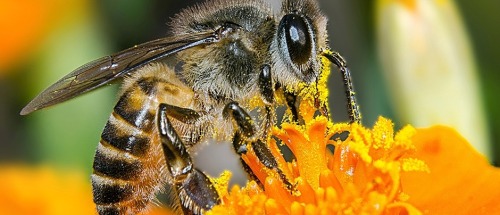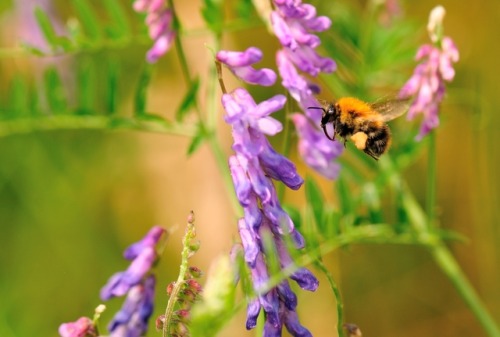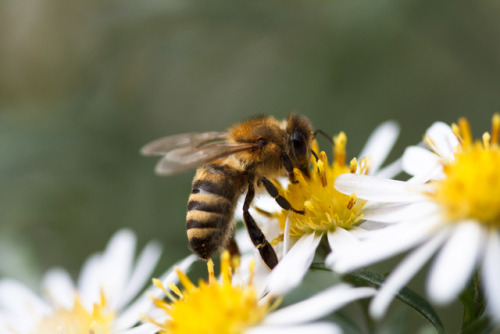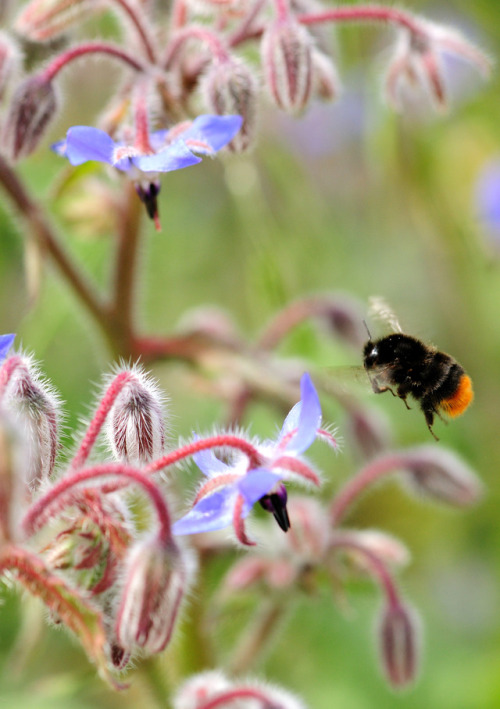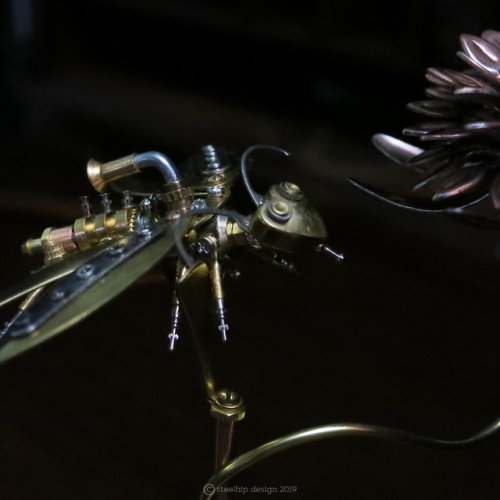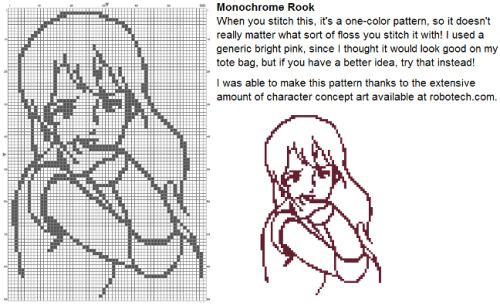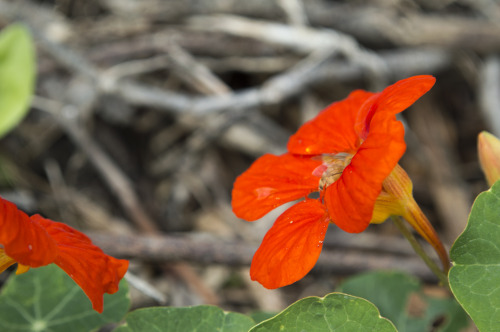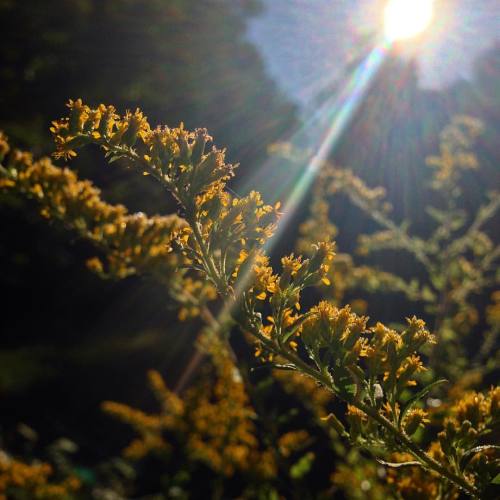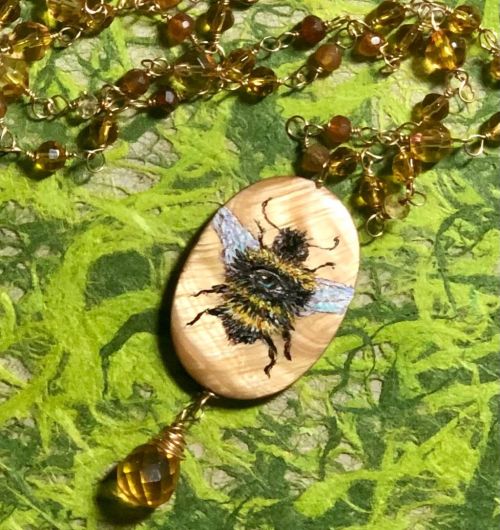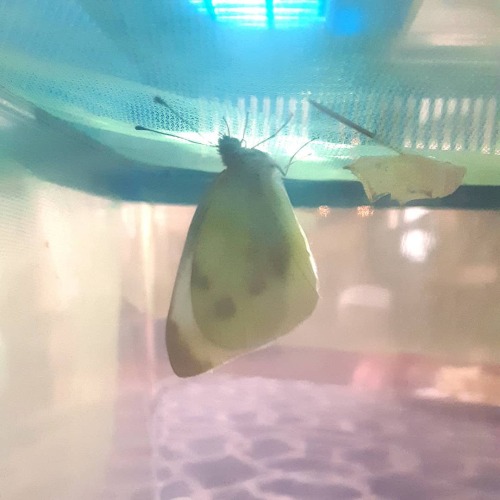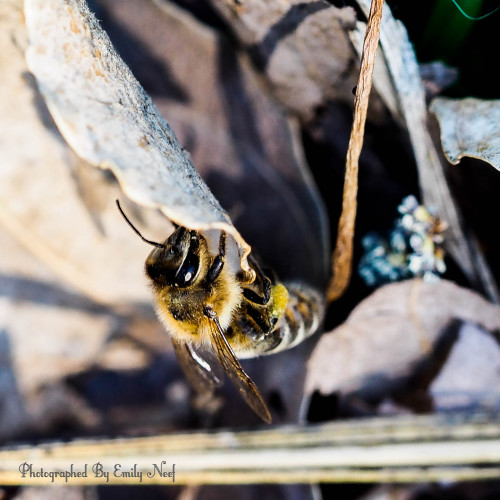#pollinator
Loss of wild flowers across Britain matches pollinator decline
The first ever Britain-wide assessment of the value of wild flowers as food for pollinators shows that decreasing floral resources mirror the decline of pollinating insects, providing new evidence to support the link between plant and pollinator decline.
In recent years, there have been considerable concerns over threats to wild bees and other insect pollinators which are vital to the success of important food crops and wild flowers.
Amongst the many pressures facing pollinators, a key factor is likely to be decreasing floral resources in Britain.
The study, published in Nature combines vegetation survey data recorded over the last 80 years with modern day measurements of nectar to provide the most comprehensive assessment ever published.
Post link
First study showing pesticide exposure can affect crop pollination by bees
For the first time an international team of researchers have shown that pesticides impair the pollination services provided by bumblebees.
Bees play a vital role in pollinating some of the most important food crops globally and have been declining in recent years. Until now research on pesticide effects has been limited to their impact on bees, rather than the pollination services they provide.
The study discovered that bumblebees exposed to a realistic level of neonicotinoid pesticides found in agricultural environments collected pollen from apple trees less often and visited flowers less frequently.
The findings of this study have important implications for both society and the economy, as insect pollination services to crops are worth at least $361Bn worldwide every year, and are vital to the functioning of natural ecosystem.
Image credits: Victoria Wickens, Dara Stanley, Dara Stanley
Post link
Flowers help increase bumblebee families survival
New research led by the UK’s Centre for Ecology & Hydrology have discovered the key to enhancing the survival of bumblebee families: flower-rich habitats.
In the UK, most bumblebee colonies live for less than a year; nests are formed in the spring by a single queen and produce up to a few hundred daughter workers. At the end of the summer, new queens are produced which, after mating and hibernation, go on to start new colonies the following spring. Understanding survival between these critical lifecycle stages has proved challenging because in the wild, colonies are almost impossible to find.
The new research overcame these challenges by matching daughter queens to their mothers and sisters using advanced molecular genetics, and estimating the locations of colonies in the landscape from the locations of their workers.
The results provide strong support for environmentally-friendly management of farmland to provide more flowers in hedgerows, meadows and along the edges of arable fields. They also help farmers and land managers decide where best to plant flowers in the landscape.
Paper reference: Claire Carvell, Andrew F.G. Bourke, Stephanie Dreier, Stephen N. Freeman, Sarah Hulmes, William C. Jordan, John W. Redhead, Seirian Sumner, Jinliang Wang & Matthew S. Heard, ‘Bumblebee family lineage survival is enhanced in high quality landscapes’ Nature, published online 1800 GMT/1400 US Eastern Time, 15 March 2017. DOI: 10.1038/nature21709.
Images:
copyright: Lucy Holmes, top & bottom photos
copyright:Flickr, Bee, middle photos
Post link
Steampowered Pollinator
Sticking gears on everything is debated in the steampunk community. Some just love the gear in its own right, others say sticking gears on everything and calling it “steampunk” misses the nuance and aesthetic of the genre. I’m in the middle - I use gears but not “orphan” gears and they must look like they actually have a purpose in the design. They can imply movement.
I’m telling you this because I wanted to make this piece with no gears. I wanted it to look like a miniature steam engine powering this little guy. Starting with a brass shelf support pin I drilled numerous holes to attach the “engine”, exhaust, wings, head and legs. Everything is screwed in.
He needed a purpose - in situ - so I made him a stand, bracket with a copper and brass flower to “fly” to. It’s curled around the main support. He can be taken off the bracket but I really like seeing him “working”. He is a combination of parts from jewellery supplies, watch parts, electrical supplies and miscellaneous hardware.
Thanks for looking! I really appreciate all the support I get from my Tumblr community.
Post link
Bumbling, shot on a Canon rebel t6

Look at this lovely fuzzy friend enjoying an artichoke flower, all cute and covered in pollen.
I feel like I’ve gotta make the most out of the time I have left with them in the garden; I’ve started to find lots of dead ones on the ground, because winter is on its way!
Post link
Some people say there is a golden light. You’re the golden light. #twinshadow #morning #sun #light #goldenrod #pollinator #nature
Post link
A few years back I did a daily mixed media post about bones called bone_a_day. I think I did it for about 3 ½ years. Starting January, I am going to do a daily post about pollinators, mostly bees, but others as well. My pollinator garden is starting its fifth year. I’m including 12 posts in order to be caught up.
Post link
#FUN El regreso de #BLONDIE con el sencillo FUN del #Album #Pollinator … DANCE DANCE DANCE … INCREÍBLE!! #SHOWBIZ #ImagenTV #OscarMadrazo @ImagenTVmex (at Imagen TV)
THE BUTTERFLY HATCHED!!!!
They’re Cabbage Butterflies (Pieris rapae) which doesn’t surprise me, except that the colour of the chrysalis is way different! We have these everywhere, and I have already fed two of the caterpillars from the same plant to my mantises, and they are sure destructive! But as adults, these butterflies are beneficial pollinators. So… my mantises aren’t getting any Mexican Wedding Cookies today.
❄❄
Once this one’s wings are dry tomorrow, I will let him go free. Hopefully the other one hatches, too. I’d love to keep them, but I don’t feel like setting up an entire butterfly habitat when I already have so many buggies, and these guys aren’t anything special for this area.
((Now if they were Western Monarchs… I would devote as much time and effort as I could to raise and release more… I’m still SO upset about their population decline, even if the numbers for this year are looking more hopeful than last year. I’m still struggling to even get Milkweed to survive in my yard, though. At least I still have more seeds I can plant.))
Still, it was fun to suddenly see a butterfly when I checked on the enclosure. I see so many of their orangey eggs on my mustard plant, I may need to remove it from the planter where I have radishes (because the radishes are getting nibbled now, too, even if they don’t have eggs…)
#butterfly #butterflies #chrysalis #chrysalises #cocoon #cocoons #pierisrapae #insect #insects #insectkeeping #bugkeeping #bug #bugs #garden #gardening #california #cali #pandemicgardening #zone9b #zone9 #zone9garden #pollinator #pollinators (at Santa Barbara County, California)
https://www.instagram.com/p/CWJbEkJhvsm/?utm_medium=tumblr
Post link
Nocturnal pollinators need love too! Unknown lepidoptera on my climbing milk vine (Cynanchum laeve).
#moth #nocturnal #pollinator #insect #bug #garden #botany #lepidoptera
https://www.instagram.com/p/BnD2Qz9gqop/?utm_source=ig_tumblr_share&igshid=9ikc6iytgs53
Post link

